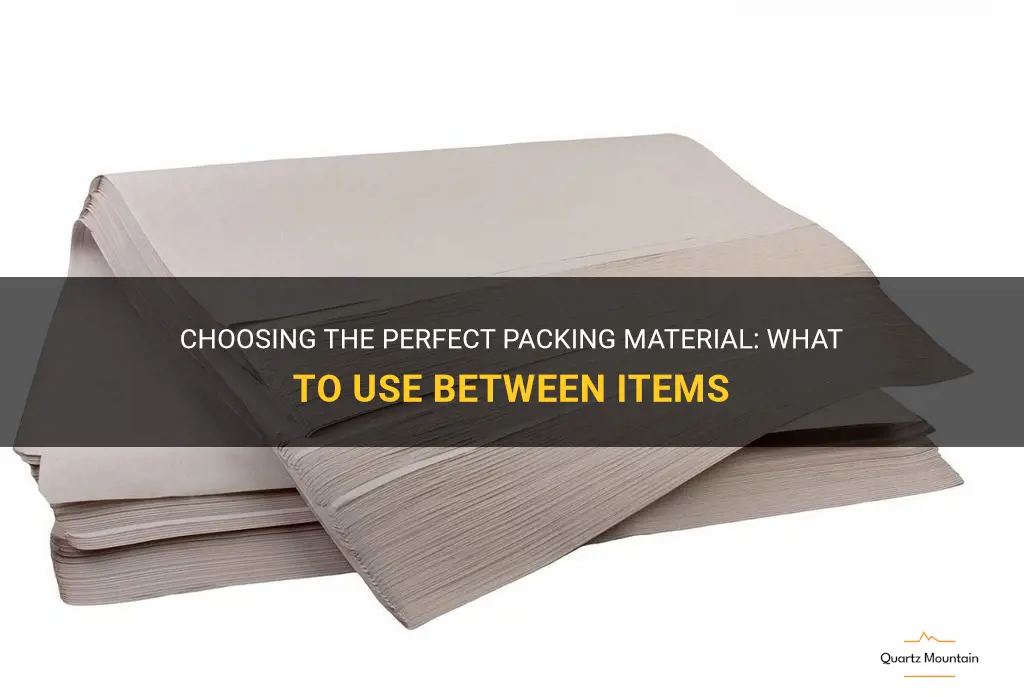
When it comes to packing and moving, it’s not just about finding the right boxes and containers - choosing the perfect packing material to place between items is equally important. Whether you’re moving to a new home or shipping fragile items, the right packing material can make all the difference in protecting your belongings during the journey. From bubble wrap to packing peanuts and everything in between, this guide will help you navigate through the various options to ensure the safety of your precious cargo.
What You'll Learn
- What is the most appropriate material to use as padding between delicate items in packing?
- Is there a specific type of tape that is recommended for sealing boxes during packing?
- Are there any alternative options to bubble wrap for protecting fragile items during shipping?
- How can I prevent items from shifting or moving around inside boxes during transportation?
- Are there any environmentally-friendly alternatives to plastic packaging materials for storing and shipping items?

What is the most appropriate material to use as padding between delicate items in packing?
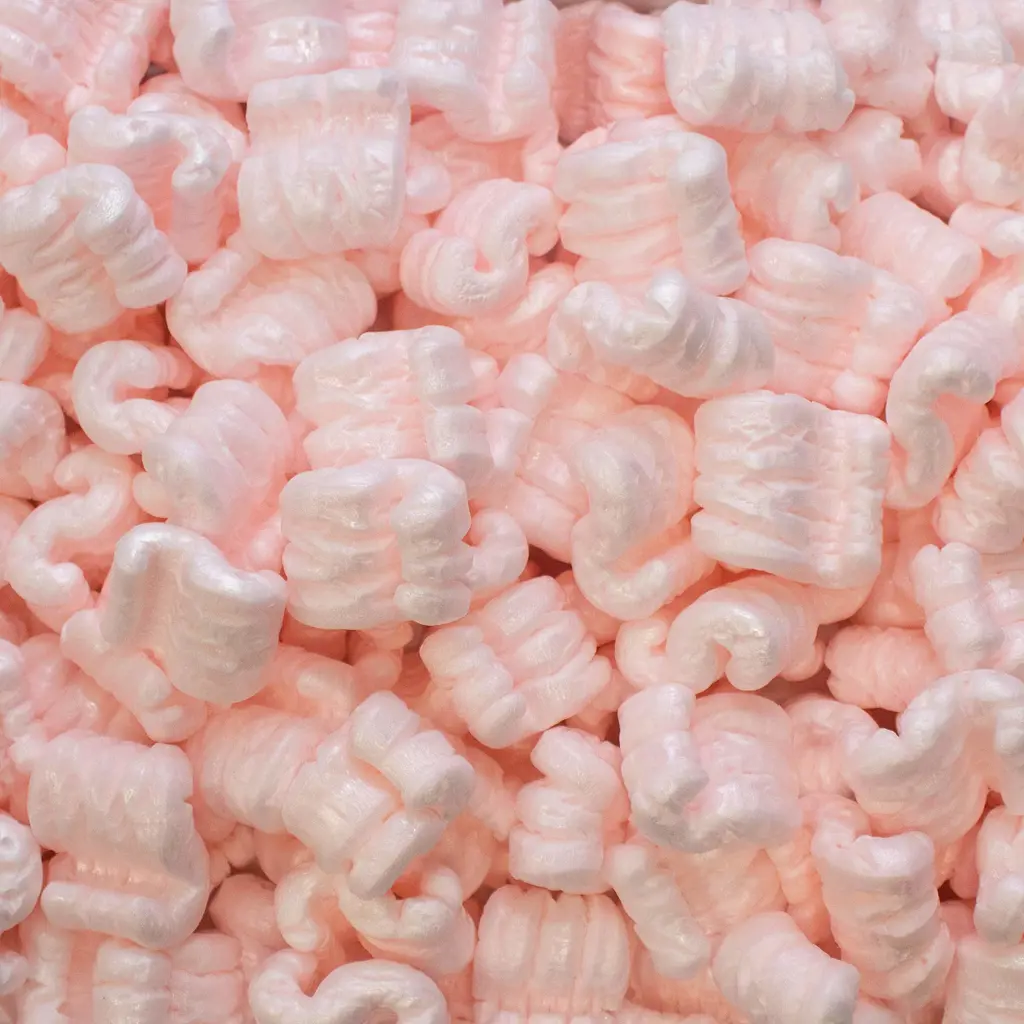
When it comes to packing delicate items, it is essential to use proper padding to protect them from any potential damage during transportation. There are several materials that can be used as padding, each with its unique characteristics and suitability for different types of delicate items.
One of the most commonly used materials for padding delicate items is bubble wrap. Bubble wrap consists of small air-filled bubbles trapped between layers of plastic film. These bubbles provide cushioning and absorb shock, making it an excellent choice for protecting fragile items. The air-filled bubbles act as a barrier, preventing direct impact and distributing the force across a larger surface area. Bubble wrap is lightweight, easy to use, and available in various sizes to accommodate different items.
Another material commonly used for padding is foam. Foam comes in different forms, such as foam sheets, foam peanuts, or foam pouches. Foam sheets can be cut into custom shapes to fit around delicate items, providing a secure and snug fit. Foam peanuts are tiny foam pieces that can be poured into empty spaces in a box to fill gaps and create a cushioning effect. These foam peanuts are particularly effective for irregularly shaped items. Foam pouches are pre-made pockets of foam that can be easily slipped over delicate items for added protection. Foam is versatile, reusable, and offers excellent shock absorption qualities.
Packing paper or newsprint can also be used as padding for fragile items. These materials provide a layer of protection and act as a buffer between delicate items, preventing them from rubbing against each other and causing damage. Packing paper is soft, lightweight, and inexpensive, making it an ideal choice for packing delicate items such as glassware or ceramics. It can be crumpled up and placed in between items to create a protective barrier.
For extremely delicate and valuable items, such as electronics or antiques, custom-made foam inserts or molded pulp trays may be the best option for padding. These inserts are created specifically for the item they are protecting, ensuring a perfect fit and ultimate protection. Custom-made foam inserts are commonly used in industries such as electronics, aerospace, and medical devices, where precision and maximum protection are crucial.
In addition to using the right materials for padding, it is essential to pack delicate items properly. Here is a step-by-step guide to packing fragile items:
- Choose the appropriate padding material based on the fragility and size of the item.
- Wrap the item in several layers of bubble wrap or foam. Secure the wrapping with tape to ensure it stays in place.
- Fill any empty spaces in the packing box with foam peanuts, crumpled packing paper, or bubble wrap to prevent movement during transit.
- Place the wrapped item in the center of the box.
- If packing multiple delicate items in one box, make sure to separate them with additional layers of padding to prevent them from touching each other.
- Close and seal the box using packing tape to secure the contents.
- Label the box as fragile, indicating that it requires careful handling.
It is also important to consider the weight and fragility of the packed items when choosing the appropriate box size and strength. Using a sturdy box that can withstand the weight and impact is essential to ensure the safety of the delicate items during transportation.
In conclusion, there are several suitable materials for padding delicate items during packing. These materials include bubble wrap, foam, packing paper, and custom-made foam inserts. Each material offers different levels of protection and is suitable for various types of delicate items. By choosing the appropriate padding material and following proper packing techniques, you can ensure the safe transportation of your valuable and fragile items.
Essential Items to Pack for a Memorable Trip to Asheville
You may want to see also

Is there a specific type of tape that is recommended for sealing boxes during packing?
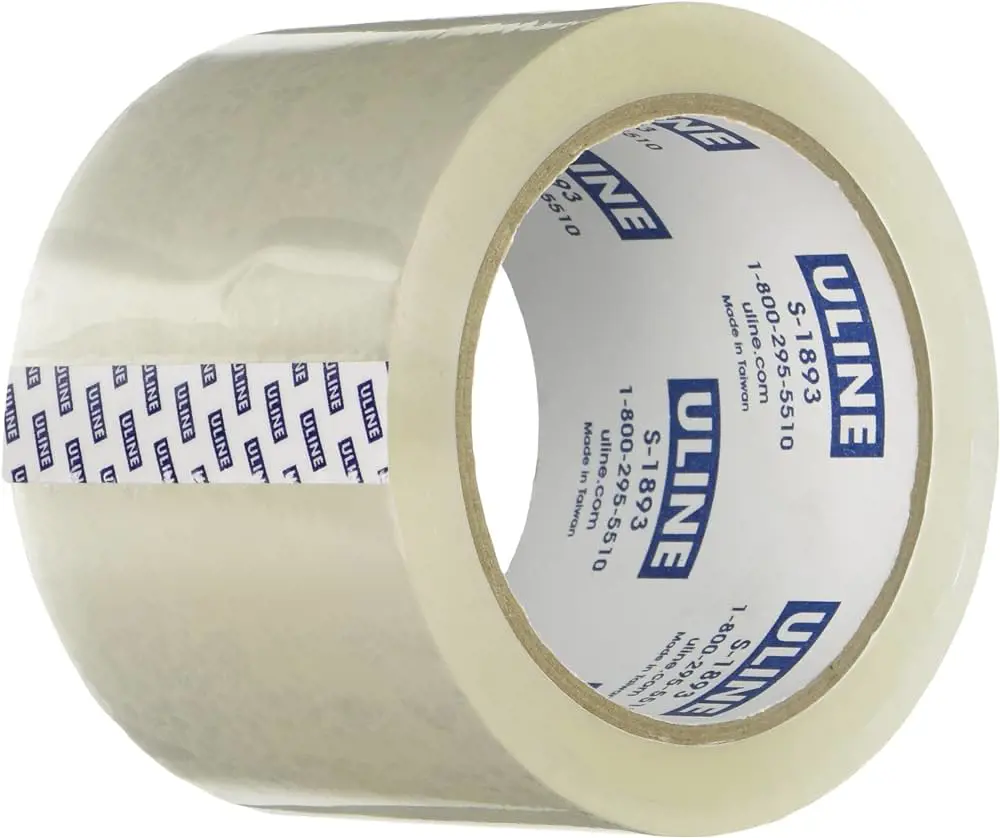
When it comes to sealing boxes during packing, using the right type of tape is essential to ensure that your items stay secure throughout the process. While there are different types of tapes available, there is a specific type that is recommended for sealing boxes.
The most commonly recommended type of tape for sealing boxes is packaging tape. Packaging tape is specifically designed for securing boxes and is made from a durable material, such as polypropylene or vinyl. This type of tape has strong adhesive properties that provide a secure seal and prevent the box from opening or coming apart during transportation.
There are a few key factors to consider when selecting packaging tape for sealing boxes. Firstly, it is important to choose tape that is wide enough to cover the entire seam of the box. This helps to distribute the weight evenly and prevent the box from opening under pressure. A width of 2 inches or more is typically recommended for standard-sized boxes.
Another factor to consider is the thickness of the tape. Thicker tape tends to be more durable and provides a stronger seal. It is recommended to choose tape with a thickness of at least 2 mils (0.05 mm) for regular use. However, for heavy-duty items or boxes that require extra security, choosing a tape with a thickness of 3 mils (0.08 mm) or more is recommended.
Additionally, it is important to choose tape that is resistant to tearing and splitting. This is especially important if you are packing heavy items or boxes that may be subjected to rough handling. Look for packaging tape that is specifically labeled as tear-resistant or heavy-duty.
To seal a box using packaging tape, follow these simple steps:
- Start by folding the flaps of the box inward to create a square shape. Ensure that the flaps are aligned and overlap properly.
- Place the packaging tape along one of the seams where the flaps meet. Position the tape so that it covers the entire length of the seam.
- Press down firmly on the tape to ensure it adheres to the box. Use your fingers or a handheld tape dispenser to smooth out any bubbles or wrinkles in the tape.
- Repeat the process for the remaining seams of the box, adding additional layers of tape if desired for extra security.
Remember to apply enough tape to provide a strong seal, but avoid using excessive amounts that could make it difficult to open the box later on.
In conclusion, when it comes to sealing boxes during packing, it is recommended to use packaging tape. This type of tape is specifically designed for securing boxes and provides a strong and durable seal. Consider the width, thickness, and tear-resistant properties of the tape when making your selection. Following the proper sealing technique will help ensure that your items stay secure throughout the packing and transportation process.
The Essential Items to Include in a Capsule Wardrobe
You may want to see also

Are there any alternative options to bubble wrap for protecting fragile items during shipping?
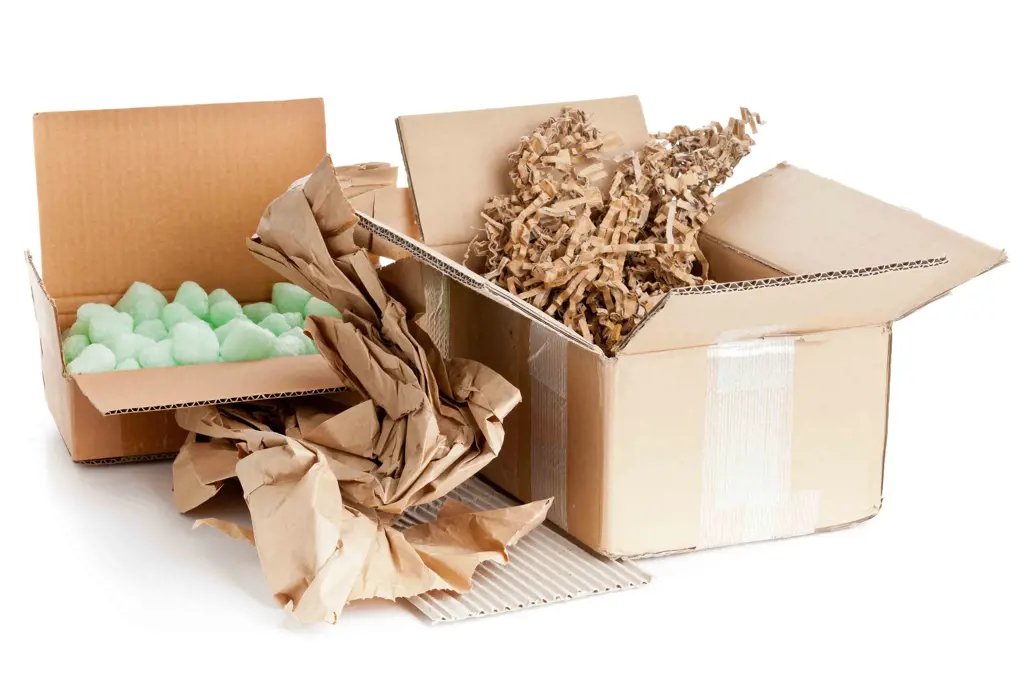
When it comes to protecting fragile items during shipping, bubble wrap has long been the go-to option. Its air-filled bubbles provide a cushioning effect that helps absorb shocks and vibrations, offering excellent protection for delicate objects. However, bubble wrap is not the only option available. In fact, there are several alternatives that can be just as effective in safeguarding fragile items.
One alternative to bubble wrap is packing peanuts. These small, lightweight foam pieces can be used to fill empty spaces in packaging, providing extra support and preventing items from shifting during transit. Packing peanuts are particularly useful for irregularly shaped items or those that have empty spaces that cannot be adequately protected with bubble wrap alone. However, it is important to note that packing peanuts can be messy and may not provide as much cushioning as bubble wrap.
Another option is foam pouches or sleeves. These pre-formed protective sleeves are made from foam and come in various sizes to accommodate different types of items. They can be slipped over delicate objects, providing a layer of cushioning and protection. Foam pouches are particularly useful for items with sharp edges or protrusions that could puncture bubble wrap or other types of packaging. However, they may not offer as much shock absorption as bubble wrap.
For smaller, lightweight items, tissue paper or newspaper can be used as a protective wrapping material. While not as effective as bubble wrap in terms of cushioning, they can provide a layer of padding to prevent scratches or minor damages during shipping. Tissue paper or newspaper can be crumpled and used to fill empty spaces in packaging to prevent items from shifting.
Another alternative to consider is air pillows. These inflatable pillows can be filled with air using a pump or a simple breath, and then strategically placed around fragile items to provide cushioning during shipping. Air pillows are lightweight, reusable, and easy to inflate, making them a convenient option for packaging fragile items. However, it is important to ensure that the air pillows are properly inflated to provide adequate protection.
In addition to these alternatives, there are also eco-friendly options available for protecting fragile items during shipping. For example, recycled materials such as shredded paper or cardboard can be used as cushioning or filling material. These options not only offer protection but also help minimize waste and reduce environmental impact.
In conclusion, while bubble wrap is a popular choice for protecting fragile items during shipping, there are several alternative options available. From packing peanuts and foam pouches to tissue paper and air pillows, there are various materials that can provide cushioning and protection for delicate objects. When choosing an alternative to bubble wrap, it is important to consider factors such as the fragility of the item, the shape and size, as well as any environmental concerns. By exploring different options, you can find the best solution for protecting your fragile items during shipping.
Essential Items to Pack for a Trip to La Paz, Mexico
You may want to see also

How can I prevent items from shifting or moving around inside boxes during transportation?
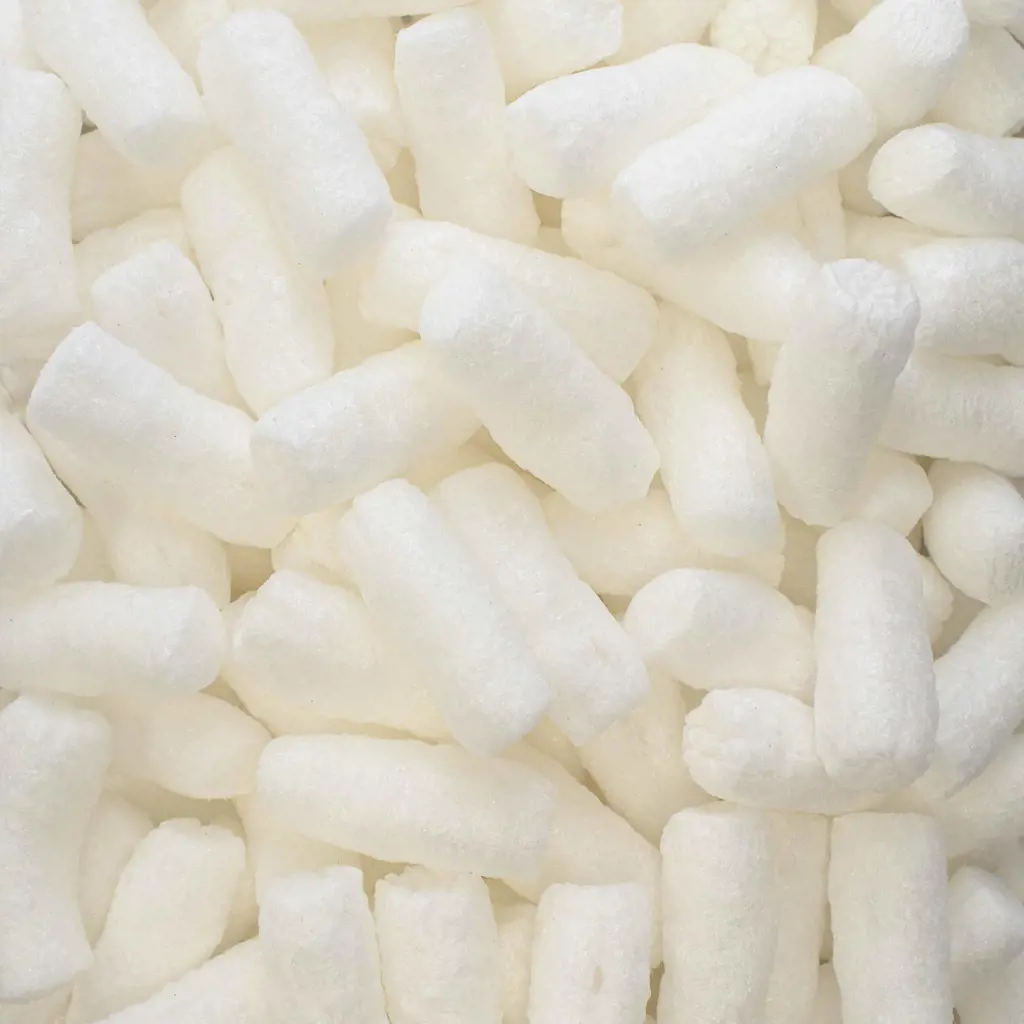
When it comes to shipping or moving items, it's important to ensure that they are properly secured within their boxes to prevent any shifting or movement. This is crucial to prevent damage to the items during transportation. Here are some effective methods you can use to prevent items from shifting or moving around inside boxes:
- Choose the right sized box: Using a box that is too large for your item can increase the risk of movement during transit. It is important to find a box that fits your item snugly, leaving little to no extra space. This will help prevent the item from shifting around during transportation.
- Use bubble wrap or packing peanuts: Wrapping fragile items in bubble wrap or cushioning them with packing peanuts can provide an extra layer of protection and prevent them from moving around inside the box. Ensure that the packing material is sufficient to keep the item secure and well-padded.
- Fill empty space with packing materials: If there is any empty space in the box after placing the item, it's important to fill it with packing materials to prevent movement. You can use crumpled newspaper, foam packaging, or air-filled packing pillows to fill the voids and keep the item firmly in place.
- Secure the items with tape or bands: Once the item is placed securely in the box, it is recommended to use packing tape or bands to further secure it. You can tape the item to the bottom of the box or use bands across the top to hold it in place.
- Double-box fragile items: For exceptionally fragile items, it is advisable to use a double-boxing technique. This involves placing the fragile item in a smaller box that is then placed inside a larger, cushioned box. This additional layer of protection can minimize movement and absorb any shocks or vibrations during transportation.
- Label and handle boxes properly: Proper labeling and handling of boxes can also contribute to the prevention of item movement. Clearly mark boxes containing fragile items and indicate which side should be kept upright. This will ensure that everyone involved in handling the boxes is aware of their contents and handles them with care.
In conclusion, preventing items from shifting or moving around inside boxes during transportation is essential to protect them from damage. By using the right sized box, cushioning items with bubble wrap or packing peanuts, filling empty space with packing materials, securing items with tape or bands, double-boxing fragile items, and properly labeling and handling boxes, you can significantly reduce the risk of movement and ensure that your items reach their destination safely.
The Best Alternatives to Cars: A Reddit Question Pack Answered
You may want to see also

Are there any environmentally-friendly alternatives to plastic packaging materials for storing and shipping items?
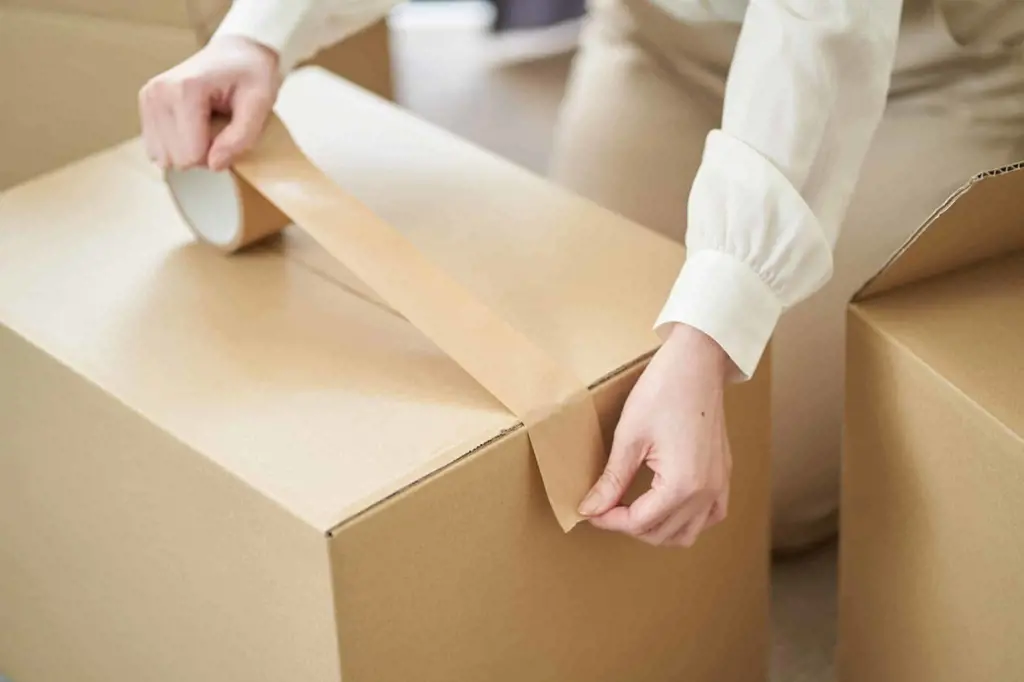
Plastic packaging materials have long been a staple in the shipping and storage industry. However, their negative impact on the environment, particularly in terms of pollution and waste, has led to a growing demand for more sustainable alternatives. Luckily, there are several environmentally-friendly options available that can be used as substitutes for plastic packaging materials.
One such alternative is biodegradable packaging materials. Biodegradable materials are those that can be broken down by living organisms and bacteria into simpler, organic compounds. These materials reduce the amount of waste generated and have a minimal impact on the environment. Common biodegradable packaging materials include cornstarch-based packaging peanuts, mushroom packaging, and compostable bags made from plant-based materials.
Another alternative to plastic packaging materials is recycled or upcycled packaging. By using materials that have already been produced and discarded, such as cardboard or paper, companies can reduce their reliance on new plastic materials. Recycled packaging materials help to conserve natural resources and reduce energy consumption during the manufacturing process. Many companies are now offering options for shipping and storing items in reusable or upcycled packaging materials, promoting a circular economy approach.
In recent years, there has been an increasing interest in utilizing natural fibers as packaging materials. Fibers derived from agricultural waste or renewable plant sources, such as jute, hemp, and bamboo, can be processed into packaging materials. These natural fiber packaging materials are not only biodegradable but also have a lower carbon footprint compared to plastic. The production of natural fiber packaging also provides opportunities for rural communities and agricultural economies.
One innovative alternative to plastic packaging is edible packaging. Edible packaging materials are made from natural, food-grade ingredients and can be consumed along with the product. Examples include edible film wraps made from seaweed or fruit skins. These materials not only reduce waste but also offer an additional value to consumers by providing a unique sensory experience.
Furthermore, companies are exploring the use of innovative materials such as mycelium-based packaging. Mycelium is the vegetative part of a fungus that can be grown into various shapes and sizes to serve as packaging. It is biodegradable, lightweight, and can be molded to fit the exact dimensions of the product being shipped or stored. Mycelium-based packaging also has excellent insulating properties, making it suitable for fragile items.
While these alternatives to plastic packaging materials show great promise, there are still challenges to overcome. These include scalability, cost-effectiveness, and consumer acceptance. However, with increased awareness and demand for sustainable packaging, the industry is working towards developing more viable and accessible alternatives.
In conclusion, there are several environmentally-friendly alternatives to plastic packaging materials for storing and shipping items. Biodegradable packaging, recycled or upcycled materials, natural fibers, edible packaging, and mycelium-based packaging are all viable alternatives that reduce waste and minimize the negative impact on the environment. As consumer demand for sustainable options continues to grow, the industry will likely develop even more innovative and practical alternatives in the future.
Essential Items for Men's Packing List: Don't Miss These Must-Haves
You may want to see also



















